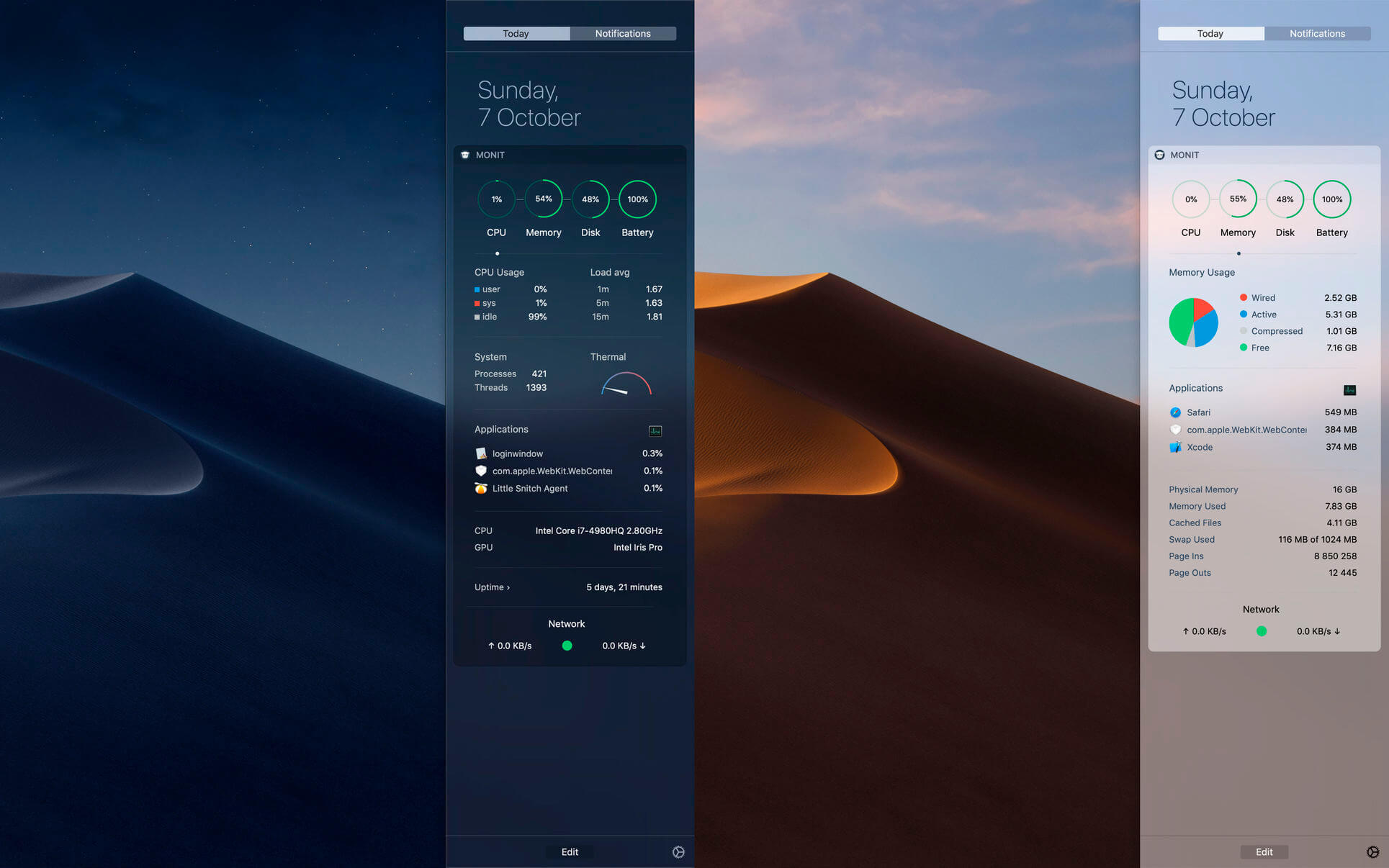

Log in with the username “admin” and password “monit” when prompted. $ sudo firewall-cmd -permanent -add-port=2812/tcpĪfter starting Monit, open the link on the browser.

#use address localhost => only accept connection from localhost (drop if you use M/Monit)Īlso, open the port 2812 once we are done editing. Look for the section in the snippet below and change the IP from localhost to 0.0.0.0 which will allow us to access the web interface from all IPs that can reach the server. The file is setup to start Monit’s http server. Monit uses the monitrc control file located in /etc/monitrc directory for its configuration. Starting Monit 5.26.0 daemon with http interface at :2812Īfter starting Monit, we can check the status as follows: $ sudo monit statusįurther, we can as well enable Monit to start when the server restarts. #You should see the message below in the end#
#Monit file install
Now, let us move on to the monit install: $ sudo dnf -y install monitĪfter the install, let us start monit with the command below: $ sudo monit $ sudo dnf -y install zlib-devel pam-devel openssl-devel libtool bison flex autoconf gcc make git epel-release We have to make sure all dependencies have been met by installing the following important packages.
#Monit file update
Like in most other installations, the first step here is to update and install necessary packages. Let us today discuss the steps to perform this task.
#Monit file software
It automatically does the maintenance and repair of the particular process and ensures it is brought back online.Īs a part of our Server Management Services, we help our Customers with software installations regularly. Once you have set up the configuration, check the syntax: monit -tĪfter resolving any possible syntax errors, you can start running all of the monitored programs.Monit monitoring tool can notify webmasters whenever the service/process goes down. You can control the programs through both the web interface or the command line. Once you have configured all of the programs that you want to run, they will be automatically tracked and restarted should they turn off. Stop program = "/etc/init.d/nginx stop" Finish Up Start program = "/etc/init.d/nginx start" Nginx check process nginx with pidfile /var/run/nginx.pid Start program = "/etc/init.d/mysql start" MySQL check process mysqld with pidfile /var/run/mysqld/mysqld.pid Stop program = "/etc/init.d/apache2 stop" Start program = "/etc/init.d/apache2 start" with timeout 60 seconds To simply ensure that programs stay online, you can use the /etc/init.d commands to stop or start a program.Īpache: check process apache with pidfile /run/apache2.pid Once the web services are set up, you can begin to input the programs that you want monitored and protected into the "/etc/monit/monitrc" configuration file. Your screen should look something like this. Login with your chosen username and password. You will then be able to access the monit web interface by going to “:2812” Once this is configured, monit should reload and reread the configuration file, and the web interface will be available: monit reload Use address 12.34.56.789 # only accept connection from localhostĪllow 0.0.0.0/0.0.0.0 # allow localhost to connect to the server andĪllow admin:monit # require user 'admin' with password 'monit'

Once the section is uncommented, write in your server’s IP or domain name as the address, allow anyone to connect, and then create a monit user and password set httpd port 2812 To configure the web interface, find and uncomment the section that begins with set httpd port 2812. Monit comes with it’s own web server running on port 2812. These settings can be altered at the beginning of the configuration file in the set daemon and set logfile lines respectively. By default, it is set up to check that services are running every 2 minutes and stores its log file in “/var/log/monit.log”. Monit is very easy to use nearly out of the box. Typing monit status displays monit’s details: The Monit daemon 5.3.2 uptime: 1h 25mĭata collected Thu, 18:35:00 Configure Monit Monit can be started up with a command that then keeps it running in the background monit Once monit downloads, you can add programs and processes to the configuration file: sudo nano /etc/monit/monitrc Monit is easiest to install through apt-get: sudo apt-get install monit This tutorial will cover the most basic setup and configuration. Additionally monit comes with a basic web interface through which all of the processes can be set up. Monit is a helpful program that automatically monitors and manages server programs to ensure that they not only stay online consistently, but that the file size, checksum, or permissions are always correct.


 0 kommentar(er)
0 kommentar(er)
